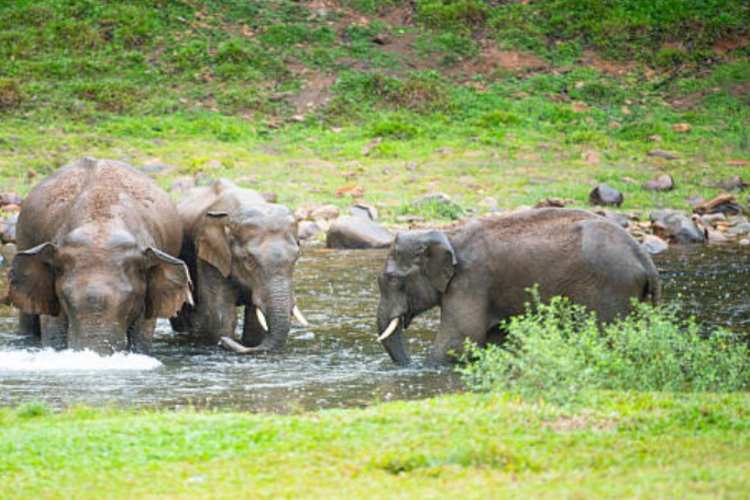There is something dramatic about Kerala’s latest legislative turn. The state that once pioneered community-led conservation along its forest frontiers now risks eroding its own environmental safeguards in the name of administrative speed. The Kerala Forest (Amendment) Bill, 2025, and its companion wildlife bill promise swift remedies for chronic problems — ranging from human-animal conflict to encroachments and forest fires. Yet, their proposed fixes may deepen the malaise. Environmentalists and young activists have taken to social media to warn that sacrificing long-term ecological integrity for short-term political convenience is a perilous bargain.
The Kerala Forest (Amendment) Bill, 2025 — also dubbed the Wild Life Protection (Kerala Amendment) Bill — grants the chief wildlife warden the authority to order the killing of wild animals that pose a threat to human life or property. It extends the power to issue hunting permits beyond the current limits of Schedules I–IV under the Wildlife Protection Act, 1972.
READ | India’s energy security hinges on smart transitions
On the surface, this seems a reasonable attempt to tackle mounting tensions between people and wildlife in a densely populated state. Kerala’s fragile Western Ghats are under immense pressure from habitat loss, invasive species, and encroachment. Local communities often complain about bureaucratic delays that leave them vulnerable during crop raids or animal attacks. However, these amendments go far beyond procedural efficiency. They rewrite definitions, shift authority, and create broad exceptions that could weaken the very institutions meant to safeguard India’s forests and wildlife.
Why the amendments are controversial
Two provisions stand out for their far-reaching implications.
First, the wildlife bill allows state officers to act instantly during “dangerous situations,” including authorising the killing of wild animals in public or residential areas and empowering the state to classify certain Schedule II species as vermin. While these powers may appear pragmatic, they encroach upon the Union government’s domain. Under the Constitution, altering wildlife schedules or reclassifying species carries national legal consequences. By assuming this authority, Kerala risks constitutional friction — what looks like administrative pragmatism could, in effect, be a legal minefield.
Second, the Forest Amendment Bill expands the category of officials empowered to arrest individuals for forest-related offences. It now includes beat forest officers, tribal watchers, and forest watchers, many of whom are temporary or locally appointed. Giving police-like powers to contract or untrained staff without parallel investments in training or oversight risks abuse. Critics warn that enforcement could become politicised, replacing scientific forestry and accountability with ad hoc decision-making.
Environmental experts argue that, rather than strengthening the forest department, these measures decentralise critical authority to the executive and to local actors who may lack both capacity and neutrality.
Rewriting the rules of protection
A particularly contentious proposal involves downgrading the Bonnet macaque from Schedule I (the highest protection level) to Schedule II. Even if wildlife protection is a Concurrent List subject, unilateral state downgrades would likely be struck down in court. Conservationists worry that this sets a precedent: if one state can downgrade macaques today, another might seek to downgrade tigers or elephants tomorrow.
In essence, the bills expand paper powers but shrink the space for professional judgment, scientific protocols, and judicial oversight. Kerala’s conservation legacy—once built on collaboration and credibility—now risks being undermined by executive overreach.
Balancing safety and sustainability
The pressure to act is real. Farmers demand protection from crop-raiding elephants, residents of hill districts want safety, and politicians want visible results. But effective policy rests on proportionate and evidence-based responses. These include rapid-response teams using non-lethal deterrents, compensation schemes for affected farmers, and community-driven habitat management.
A law that privileges instant lethality over long-term management may bring short-term relief and political credit, but it will not reduce human-wildlife conflict sustainably. Studies from Wayanad and Palakkad show that well-implemented early-warning systems, solar fencing, and crop insurance have been more effective in reducing casualties than shoot-to-kill orders.
The constitutional and legal risk
Wildlife protection in India operates within a tight federal framework. The Wildlife Protection Act (1972), passed by Parliament, defines species classifications, protection levels, and the circumstances under which animals may be declared vermin. Any deviation by a state requires central consent and presidential assent. Kerala’s move to legislate independently could thus invite judicial scrutiny or even presidential disallowance.
Rather than pursuing unilateral amendments, Kerala would do better to work with the Centre on joint wildlife management protocols, including quicker clearances for controlled interventions and enhanced funding for forest staff safety.
Kerala’s challenge lies not in the absence of laws, but in the lack of nimble enforcement and scientific capacity. The solution lies in better deterrence, habitat restoration, and rehabilitation, not dilution of statutory safeguards. The state should invest in modern tracking systems, animal corridors, and conflict mitigation teams—approaches that deliver safety without ecological cost.
If Kerala truly wants to lead again in conservation, it must craft laws that are smart, not reckless — balancing the immediacy of human safety with the permanence of nature’s trust.

